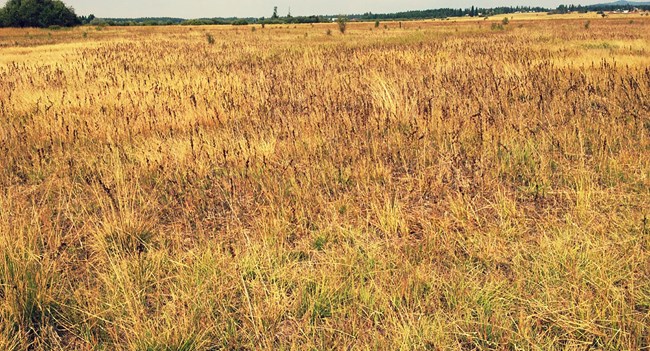Last updated: November 28, 2023
Article
Camas

NPS
Camas has been an important food to the Nez Perce since time immemorial.
The edible part of camas is the bulb, so, harvesting requires digging up the plant. One traditional way of ensuring a good harvest the following year is to leave the smaller bulbs in the ground.
Camas blooms in late spring and early summer. By the fall, it is ready to be harvested.
When Meriwether Lewis and William Clark arrived at Weippe Prairie in September 1805, Nez Perce families were processing the camas bulbs they had dug up. There were, Clark wrote, “Emence quantity of the quawmash or Pas-shi-co root gathered & in piles about the plains.” Everyone was digging, cleaning, collecting, and preparing the camas for cooking.
Nez Perce people cooked the camas in small earthen kilns, and then made bread and other meals out of the nutritious root vegetable.
They shared their camas harvest with Clark, Lewis, and the people with them. Patrick Gass said that the taste of camas bread reminded him of pumpkin bread. The visitors ate so much camas that they got sick. But then they kept accepting more and more—so much that eventually Nez Perce leaders stopped giving it freely and asked their guests to pay for any additional camas. They did, so they could bring camas bread on their journey down the Columbia River.
Nez Perce people continue to cultivate and harvest camas in this region. The traditional ecological knowledge of the Nez Perce Tribe has informed how government entities such as the National Park Service manage camas grounds at Weippe Prairie.
About this article: This article is part of a series called “Pivotal Places: Stories from the Lewis and Clark National Historic Trail.”
